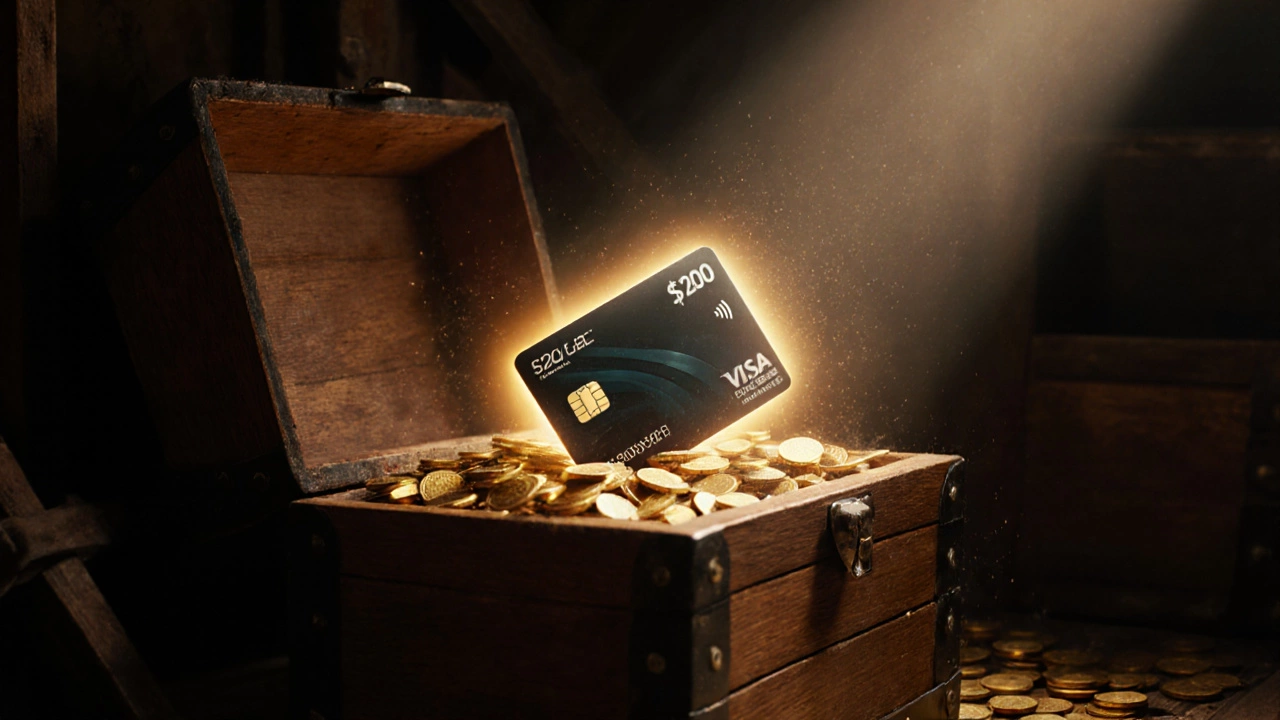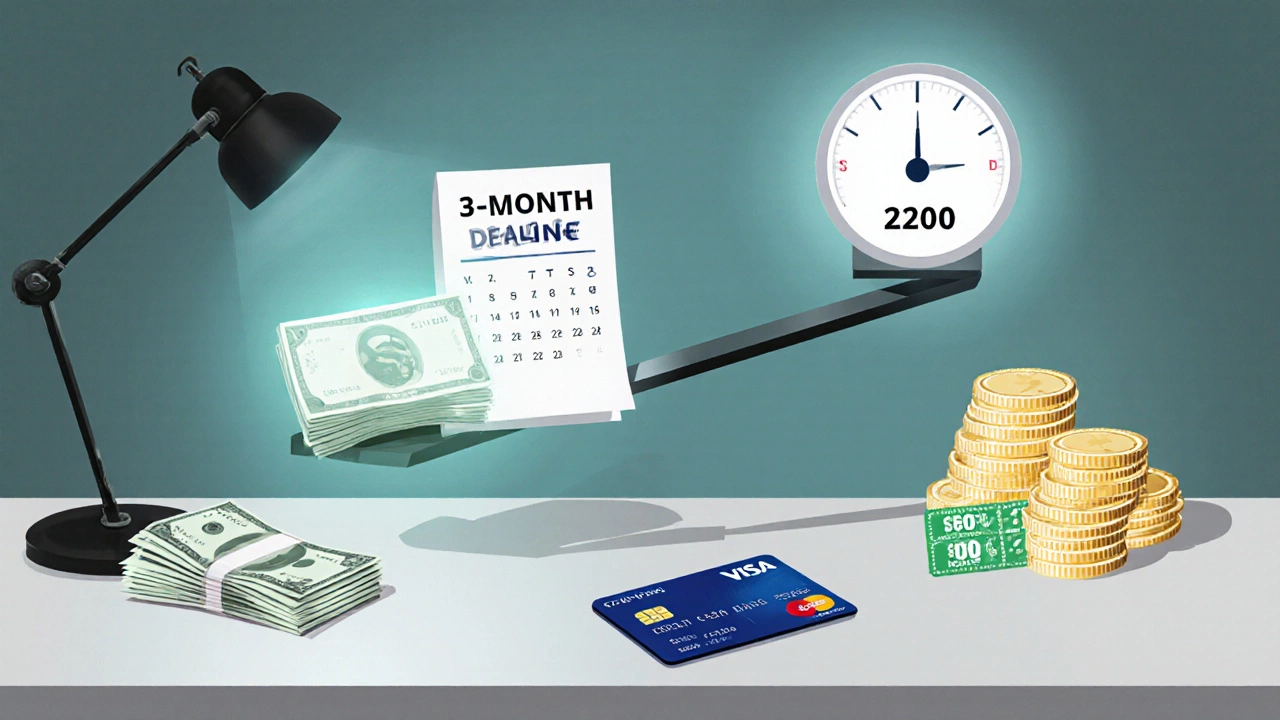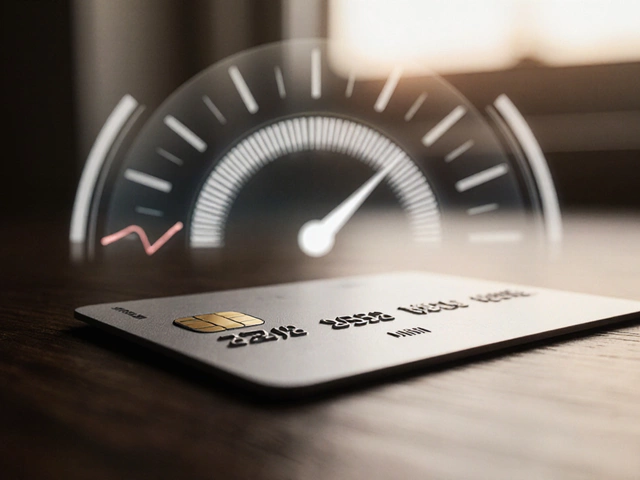
Seeing a headline that promises a $200 credit card bonus can feel like finding a hidden treasure, but you need to know what you’re actually getting before you start planning a splurge. In this guide we break down the mechanics, the math, and the common traps, so you can decide if the offer is worth your time and spending habit.
What the $200 Bonus Actually Is
At its core, the $200 bonus is a Sign‑up Bonus a one‑time reward offered to new cardholders who meet specific spending criteria within a set period. The money shows up as a cash credit on your statement, as a statement credit, or sometimes as a prepaid card you can spend anywhere.
How You Earn It - The Minimum Spend Requirement
Most $200 offers are tied to a Minimum Spend Requirement the total amount you must charge to the new card during the introductory window, usually three months. Typical thresholds range from $1,000 to $1,500. If you regularly spend $500 a month on groceries, gas, and bills, hitting a $1,200 target is doable; otherwise you might end up purchasing things you don’t need just to chase the bonus.
Calculating the Real Value
To see if the $200 is a good deal, compare it to the card’s Annual Percentage Rate (APR) the interest rate applied to balances carried beyond the grace period. If you plan to carry a balance, a 0% introductory APR is ideal; otherwise the regular APR (often 18‑22%) can quickly erode the bonus value through interest charges.
Another angle is to value the bonus against other reward structures. For example, a card that offers 1% Cash Back Reward a percentage of your spend returned as cash would require $20,000 of spending to equal $200. That’s a steep bar, so the $200 sign‑up bonus usually beats pure cash‑back offers for short‑term gains.
Points vs. Cash - Which Is Better?
Some cards let you convert the $200 into Reward Points a currency that can be redeemed for travel, merchandise, or statement credit. If the conversion rate is 1 point = $0.01, you’d need 20,000 points to equal $200 - which is rarely the case. Most point‑based offers market the bonus as “20,000 points worth $200,” but the actual redemption value can drop to $150 if you pick gift cards or merchandise. Cash‑back is simpler and often more valuable unless you are a frequent traveler who can maximize travel redemption rates.

Potential Hidden Costs
Don’t forget the Balance Transfer Offer a promotion that allows you to move existing debt onto the new card at a lower rate, usually for a limited time. While tempting, balance‑transfer fees (often 3‑5% of the transferred amount) can offset the $200 bonus if you move a large balance. For a $5,000 transfer at a 3% fee, you’ll pay $150 - leaving only $50 net gain.
Annual fees are another factor. Many cards that flaunt a $200 bonus also charge $95‑$150 per year. If you plan to keep the card beyond the first year, you’ll need to earn enough ongoing rewards to justify that cost. Some cards waive the fee for the first year, making the bonus even sweeter, but the fee returns after twelve months.
Credit Score Impact
Applying for a new card triggers a hard inquiry on your Credit Score a numeric representation of your creditworthiness used by lenders. A single inquiry usually drops your score by 5‑10 points. If you’re already near a threshold for a mortgage or car loan, that dip could affect loan terms. However, the new card also adds to your total available credit, which can improve your credit utilization ratio - a key component of the score - as long as you keep balances low.
Step‑by‑Step: Claiming the $200 Bonus Without Regret
- Read the fine print. Identify the exact spend amount, time window, and any category restrictions (e.g., “spend must be on everyday purchases, not balance transfers”).
- Calculate your true cost. Add up the annual fee, potential balance‑transfer fees, and any interest you might incur if you carry a balance.
- Match the bonus to your spending pattern. If you already spend $1,200 on groceries, utilities, and transport each quarter, the bonus is effectively free.
- Set a reminder. Mark the end of the promotional period in your calendar so you don’t miss the deadline.
- Pay off in full. Avoid interest by clearing the balance before the grace period ends.
- Monitor for fee changes. Some issuers raise fees after the first year; decide whether to keep or cancel before renewal.
Comparison Table: $200 Cash Bonus vs. 20,000 Points
| Feature | $200 Cash Bonus | 20,000 Points |
|---|---|---|
| Redemption flexibility | Statement credit, prepaid card, or direct deposit | Travel bookings, gift cards, merchandise, or statement credit |
| Typical value | Exact $200 | Varies: $150‑$200 depending on redemption method |
| Spend requirement | $1,000‑$1,500 in 3 months | Same spend threshold (often identical) |
| Annual fee | $0‑$95 (first year waived on many cards) | Usually $95‑$150 |
| Best for | Cash‑centric spenders, short‑term bonus hunters | Frequent travelers or point‑maximizers |

Common Pitfalls and How to Avoid Them
- Overspending to hit the target. Add only purchases you would make anyway. If you have to buy luxury items just to reach $1,500, the net gain shrinks.
- Forgetting the deadline. Bonuses are void if the spend isn’t met by the cut‑off date. Set a phone reminder.
- Carrying a balance. Even a small interest charge can wipe out the $200 advantage. Pay the full balance each month.
- Missing the fee reset. Some cards automatically renew the annual fee after 12 months. Cancel before the renewal if you don’t plan to use the card long‑term.
- Neglecting credit utilization. Adding a new line boosts total credit, but a sudden spike in balance can temporarily raise your utilization ratio and lower your score.
When a $200 Bonus Is a Smart Move
If you already meet the spend threshold through regular bills, groceries, or recurring subscriptions, the bonus is essentially free cash. It’s also a good entry point if the card offers a 0% intro APR on purchases for 12‑15 months, allowing you to make larger purchases without interest while still earning the bonus.
Another sweet spot is for credit‑building enthusiasts. A card with a modest $95 annual fee, a $200 bonus, and a 0% intro APR can serve as a “starter” card. You earn the bonus, improve utilization, and pay off the annual fee with the cash credit, ending up ahead.
When to Walk Away
If you have a high‑interest existing balance, the balance‑transfer fee plus the annual fee will likely outweigh the $200. Also, if you’re planning a major loan (mortgage, car) within the next six months, adding a hard inquiry might be risky.
Lastly, if you’re not comfortable tracking spend thresholds or paying off the full balance each month, the simplicity of a no‑bonus, low‑fee card may suit you better.
Frequently Asked Questions
How long does it take to receive the $200 bonus?
Most issuers credit the bonus to your account within 30‑45 days after you meet the spend requirement and the promotional window closes. Some banks post it as a statement credit, while others issue a prepaid card.
Can I get the bonus if I transfer a balance?
Usually not. Most bonus terms exclude balance transfers, cash advances, and fee payments from the qualifying spend. Only purchases of goods and services count.
Will the bonus affect my credit score?
A hard inquiry may drop your score by a few points, but the added credit limit can improve your utilization ratio, which often offsets the dip if you keep balances low.
Is a $200 cash bonus better than a 20,000‑point sign‑up offer?
Cash is more flexible and usually retains full value. Points can be worth more if you redeem them for premium travel, but the actual value varies widely. Choose based on your spending habits and redemption preferences.
Do I have to keep the card after earning the bonus?
You can close the account after the bonus clears, but be aware of any pending annual fee or the impact on your credit history length. Keeping it for at least a year can help your credit score if you use it responsibly.






Write a comment